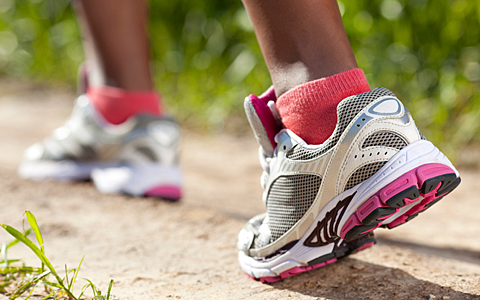
Fortunately, there are some simple ways to shed those unwanted kilos and get a little fitter in the process – it all starts with common sense and needn’t cost a fortune either.
Easing up on the sugar, the fatty foods and the alcohol are first steps. Makes sense when you think about it, but it can be a case of easier said than done.
According to MyPyramid, at the 2,000 calorie level, here’s what the guidelines suggested:
• Fruit Group should provide 4 daily servings, or 2 cups.
• Vegetable Group should provide 5 servings, or 2.5 cups.
• Grain Group should provide 6 ounce-equivalents (1 ounce-equivalent means 1 serving), half of which should be whole grains.
• Meat and Beans Group should provide 5.5 ounce-equivalents or servings.
• Milk Group should provide 3 cups/servings.
• Oils should provide 24g or 6 teaspoons.
Discretionary Calories: The remaining amount of calories in each calorie level after nutrient- dense foods have been chosen. Up to 267 calories could be consumed in solid fats or added sugars if the other requirements were been met.
So that’s the diet taken care of; what about exercise? Before you say “I haven’t got time for this”, here are a few facts. Workouts don’t need to be long to be beneficial. If you work hard during your workout (high intensity); then 30 minutes a day will help. Recent Australian research has found that even 20 minutes of high-intensity interval training burned more calories than 40 minutes at a steady pace.
If time is critical, you can think about breaking down your daily exercise into short bouts. Research also shows that activity bouts as short as 10 minutes are effective.
Another common de-motivator for exercise is often the cost. The good news is there are some inexpensive ways to get fit, and stay fit. These include:
• Use the stairs, climb a flight and then go back down again. Repeat this and gradually build up what you do
• Regular balance exercises are important, especially as you get older. Try this one:
1. Position the heel of one foot just in front of the toes of the other foot. Your heel and toes should touch or almost touch.
2. Choose a spot ahead of you and focus on it to keep you steady as you walk.
3. Take a step. Put your heel just in front of the toe of your other foot.
4. Repeat for 20 steps.
Tip: If you are unsteady on your feet, try doing this exercise near a wall so you can steady yourself if you need to.
• Try an outdoor gym. Many local councils have installed these in outdoor areas such as parks.
• Swim in the local pool. You’ll find most pools have concession rates too for students and pensioners.
• Devise your own routine. Put some music on and create your own aerobic workout by dancing, jogging on the spot, star jumps or skipping. Try to do 10 minutes and gradually increase the duration and intensity.
• Improvise with tins. A good way to tone and strengthen arms and shoulders is to use baked beans or other tins as eights. Hold a tin in each hand, stretch out your arms to each side and move them in circles, keeping them straight. Do 10 clockwise and then 10 anti-clockwise.
• Walking – even 10 minutes a few times a day will help.
Keeping it simple, low cost and regular will increase fitness and combined with sensible eating those unwanted kilos, over time, should start to move – in the right direction, that is slow and steady weight loss.
Comments are closed.